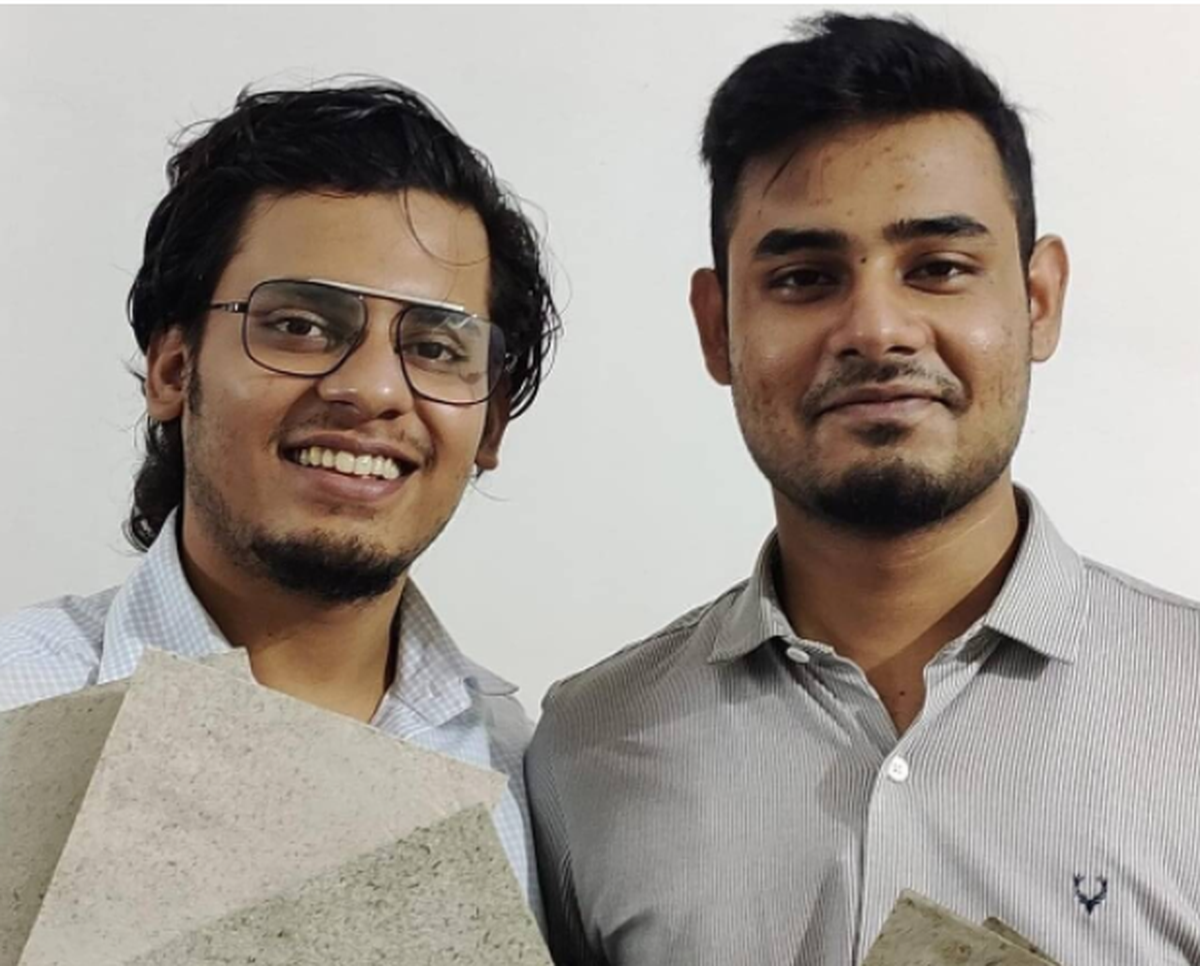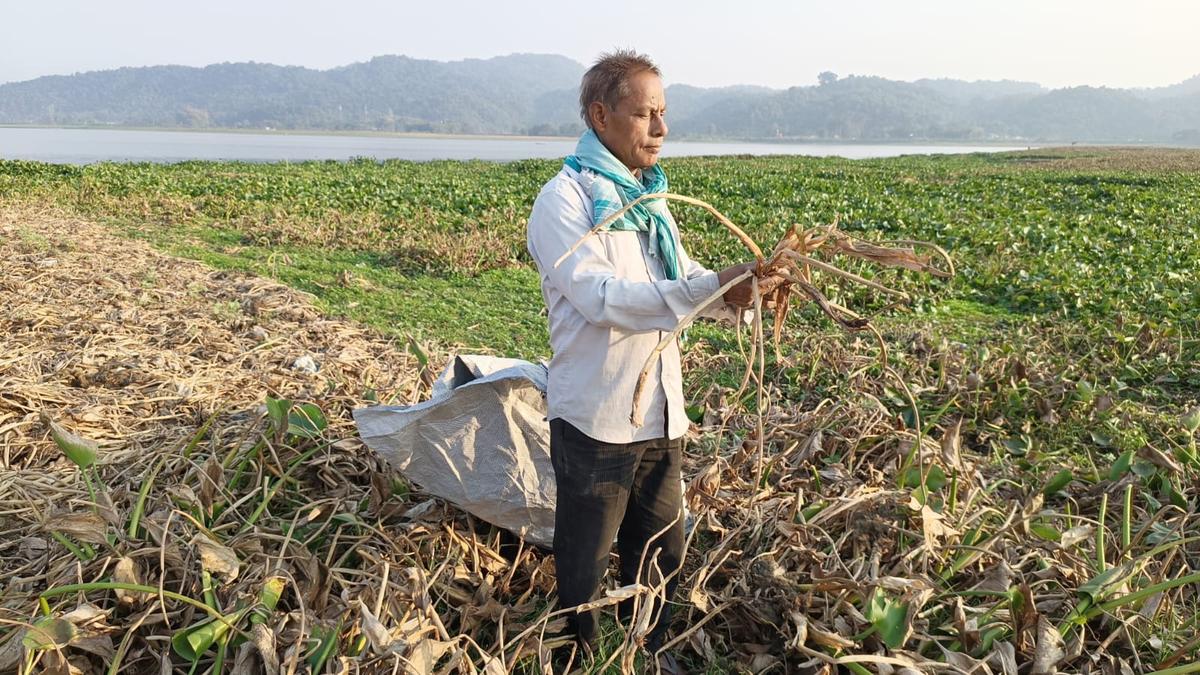We have seen paper crafted from elephant dung, plantable diaries embedded with seeds, and bamboo pens. Adding to the list of eco-friendly stationery products are Rupankar Bhattacharjee and Aniket Dhar, who are turning water hyacinth into stationery at Kumbhi Kagaz in Guwahati, Assam.
Their current product range includes notebooks, journals, and calendars that are compostable, and chemical-free
| Photo Credit:
Special Arrangement
The idea for the initiative emerged from an unexpected moment in Nature, says Rupankar, who is also a wildlife conservationist. “While releasing a rescued python back into the wild, as members of the NGO Help Earth, we became aware of the destructive impact of water hyacinth on local water bodies. During this experience, herpetologist DrJayaditya Purkayastha, also our mentor, shared his frustration with the invasive plant and its ecological consequences,” says Rupankar, 27, adding that under Jayaditya’s guidance, he and Aniket began researching the plant. They discovered that water hyacinth has a high cellulose and hemicellulose content, making it a promising raw material for papermaking. “During the COVID-19 lockdown, we started experimenting with handmade paper using DIY methods and successfully developed our first prototypes. Around the same time, we co-founded The Inside Out Program, focussed on conservation awareness through trekking and biodiversity documentation.”
A snapshot of the making process
| Photo Credit:
Special Arrangement
Their current product range includes notebooks, journals, and calendars that are compostable, and chemical-free. In 2021, the duo won the UK-based WasteAid Zero Waste Cities Challenge – Guwahati, and soon after, they bagged the Tide 2.0 title at Assam Downtown University Venture Labs and the India Pitch Pilot Scale Startup Challenge.
Taking us through the process, Rupankar says they follow a traditional handmade papermaking process, with modern interventions introduced to improve efficiency and sustainability. First, water hyacinth is harvested from wetlands and allowed to dry naturally, either near the collection site or at the processing area. Once dried, the fibrous parts of the plant are cleaned and cut into small pieces that are ground with water to create a smooth pulp, which forms the base of the paper. Next, this pulp is poured into a vat and lifted with a screen to form a thin, even layer of wet paper that is stacked and pressed to remove excess water. After being air dried, the sheets are flattened and trimmed by hand for final use. “We’ve made specific innovations in pulping and machinery, which allow us to produce chemical-free paper using invasive water hyacinth as our primary raw material,” says Rupankar.
Water hyacinth is an invasive weed
| Photo Credit:
Special Arrangement
At the brand’s Deepor Beel unit (in Guwahati, Assam), the duo have collaborated with a small group of farmers from the surrounding wetland and trained local artisans from the same community to participate in the paper production process. “In Kaziranga, we are working closely with Eco Development Committees (EDCs) and Joint Forest Management Committees (JFMCs) to involve local communities in conservation-linked livelihood generation. In Goalpara, where we are setting up a new unit — supported by the International Fund for Agricultural Development (IFAD) and organised by Access Development services— we aim to engage over 300 farmers in harvesting and supplying water hyacinth,” says Rupankar.

Rupankar Bhattacharjee and Aniket Dhar | Photo Credit: Special Arrangement
But is the process costlier than creating other recycled paper variants? “Our papermaking process is entirely handmade, which makes it approximately five times higher than conventional machine-made recycled paper. This has been especially evident at our smaller unit, where limited drying space has led to production delays and increased costs,” explains Aniket, 24. However, with the setup of our larger production unit, he aims to significantly reduce per-unit costs. In addition, the duo is looking at creating products beyond stationery. “We’re currently testing vegan leather alternatives derived from plant fibres and waste, aiming to create durable, eco-friendly products for the lifestyle and accessories segment,” he says, “We’re also experimenting with the eco-packaging market, developing products like coasters, honeycomb wraps, and water hyacinth-based paperboard.”

Water hyacinth is harvested from wetlands and allowed to dry naturally, either near the collection site or at the processing area
| Photo Credit:
Special Arrangement
As they scale up production, Aniket says their goal is to “democratise access to sustainable materials”. “We want to ensure that conscious consumption becomes not just a choice, but the norm. You can also look forward to new product lines, deeper community engagement, and more climate-positive innovations that align with our mission of restoring wetlands and supporting green livelihoods,” he concludes.
Journals upwards of ₹500 on kumbhikagaz.com
Published – July 07, 2025 04:01 PM is








